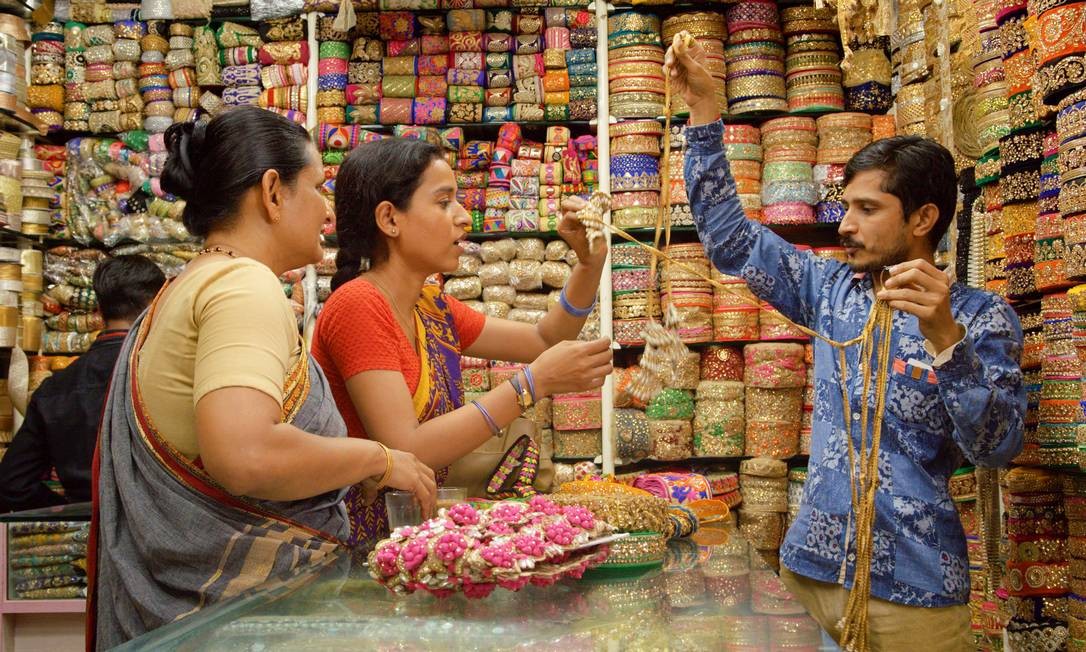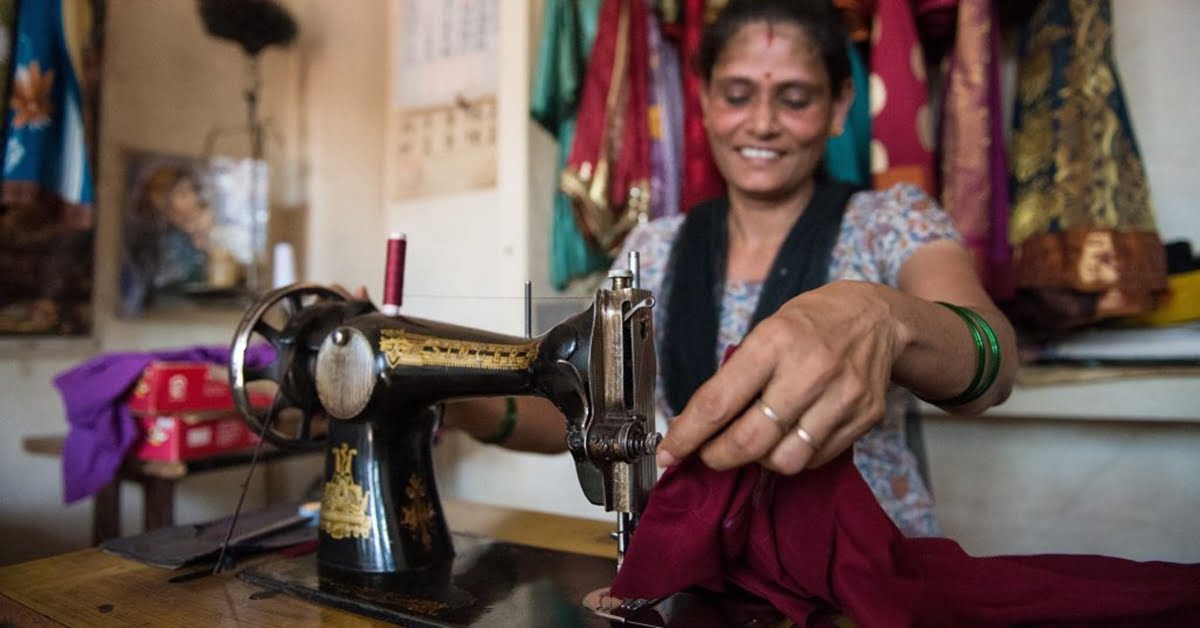Sir (2018), directed by Rohena Gera made its way to Netflix this January. The story is simple—about two people from disparate backgrounds—Ratna and Ashwin, who come to be in a single time-space frame due to filial obligations of their own. Ratna is a domestic worker in the household of Ashwin and Sabina. The relationship between Sabina and Ashwin breaks down and Ashwin comes back home to be with his family which is coping with the death of a son, Ashwin’s brother. The movie opens with a poorly-spirited Ashwin coping with losses of different kinds. Ratna is a widowed woman, her marriage lasting for barely 4 months. She had become a widow at the tender age of 19 years and comes to work as a domestic worker in order to get the money to further her sister’s education. Left on her own, she secretly wishes to become a fashion designer.
Also read: Cutting The Cycle Of Violence Through Girl And Women Empowerment
While the film Is Love Enough? Sir may have made several pertinent observations and comments about human relationships especially within the caste-class-gender framework, it has thrown up an oft-repeated equation between financial freedom and women’s empowerment, however this time with the ubiquitous sewing machine sitting at the very epicentre.
The film explores the dynamics of class and gender using the warmed-up prism of human relationships and emotions. Love brews ever so slightly between the two protagonists. The film ends with Ratna addressing Ashwin by his first name, signifying the bridging of the divisive gap that exists between them at several levels.

While the film may have made several pertinent observations and comments about human relationships especially within the caste-class-gender framework, it has thrown up an oft-repeated equation between financial freedom and women’s empowerment, however this time with the ubiquitous sewing machine sitting at the very epicentre.
This also comes at a time when advertisements under the NDTV Special Projects – mainly the Kushalta Ke Kadam Campaign assails viewers between news telecasts. The Kushalta Ke Kadam campaign, outlines the financial freedom and sense of empowerment that women can achieve from sewing machines. In fact, women who are minus the benefits of formal schooling and vocational skill-set may well stand to benefit hugely from knowing how to operate a sewing machine. The Usha Sewing Schools, aided by solid corporate backing and funds are assisting several women with disparate and difficult experiences to have a sustainable livelihood and a sense of identity.
So really, the film Sir is very pertinent to the times and articulates well the potential of the ordinary sewing machine to give women a patch of sunshine; a glimmer of hope for a transformed future.
For a long time, cinema in India has shown women getting behind their sewing machines when the going got rough and tough. Matinee Mothers like Nirupa Roy, Sulochana Devi, Waheeda Rehmaan and so many others resorted to stitching when it came to earning money to overcome financial struggles, feed a near-destitute family and fund the schooling initiatives of the ‘hero’.

However the projection of sewing as just an aid to stitch buttons and blouses, collars and cuffs turned around with the Anushka Sharma-Varun Dhavan starrer Sui Dhaaga. Mauji, (Dhavan’s character) comes from a family of tailors. With the shutdown of the handicraft business, the family is forced to look for alternatives. So Mauji works as an errand boy in a shop that sells sewing machines. Anushka’s character Mamta pushes her husband Mauji to pitch for a better identity by setting up his own tailoring business. After all Mauji is skilled in tailoring; and a tailored hospital gown for his mother opens up new business avenues. The end rushes to show the duo enter into a prestigious fashion designing competition where their tailoring skills not only brings them the prize money but also better negotiating powers as individuals in a fractured society. While the film is essentially about dignity of labour, it also establishes the link between sewing/embroidering to entrepreneurship.
Sui Dhaga was a game changer in the wide canvas of films that had so far showcased sewing as a woman’s thing; more as a ‘domestic extension’ that could give a chance to women to earn a few extra pennies. Sir and Sui Dhaaga are worth a mention since both films do not hold out sewing or sewing machines as just a way to financial freedom, but more as agents of change in the struggle for identity and empowerment.
Despite these progressive moves, sewing machines also continue to be touted as ‘ideal gifts’ for daughter/daughters in law’.
A look at sewing machine advertisements down the ages shows that omnipresence of women cast in the roles of mothers or daughters.

It appears without much debate or discussion that the sewing machine is seen as a product that aids in domesticity. Much like the washing machine, a mixer grinder, or even the range of masalas, processed foods, cleaning agents etc. Brushed with modern advertising gloss of gender sensitivity, the sewing machine was added to the list of domestic purchases that established credentials of a ‘good and sensitive husband’ or ‘a warm family’ which took care of its women and gave them tools which reduced their workload. Suffice to say that like most other things, the sewing machine advertisements too dehumanised woman’s labour and creativity.
So the moot question is: how does a front runner in the area of Social Initiatives for Transformation like NDTV hold up sewing machines as a catalyst for change?
The answer may lie in the fact that sewing is something most girls are tutored in as part of the gendered socialisation process. The needle-thread is skillfully used by women with the same ease and finesse with which they wield the cooking spatula or ladle. The sewing machine simply gives them a handy tool which makes their work faster and easier. Plus, it doesn’t require an intensive skill set for use and is relatively easy to operate by women of almost all age groups. For corporate backers pushing forward silai machines, the module is better than papad/laddu making ventures which are very labour-intensive, exhaustive, and entrenched into the kitchen space and so deeply gendered. With sewing machines that have already been brought into open spaces by the ‘darzi’, the ‘tailor master’ and by boutique owners, it’s a win-win situation for all – women and their backers.
Given the way women used their sewing machines during the recent pandemic: making masks, selling them and augmenting the family’s income, there is definitely a potential worth tapping into, which explains promotional campaigns around the silai machines.
Given the way women used their sewing machines during the recent pandemic: making masks, selling them and augmenting the family’s income, there is definitely a potential worth tapping into, which explains promotional campaigns around the silai machines. Under the Kushalta Ke Kadam Intiative, fashion designer Rohit Bal used the embroidery skills of Kashmiri women in four village clusters to showcase his latest collection in the Lakme Fashion Week. These women worked on designs and motifs given to them, paddling away furiously or turning the wheels of their sewing machines with intent and determination. The women not only reshaped their lives in volatile Kashmir, but in the process they were able to carve an identity of their own. “Through this initiative, the company has trained women entrepreneurs from the villages in their local vernacular, provided them with a sewing machine, and a Silai School signage, besides encouraging them to teach other community women the art of stitching and sewing,” says Dr Priya Somaiya, Executive Director at Usha Social Services.
Also read: Analysis Of Sir (2018): Blatant Invisibilisation Of Caste Privilege
Are sewing skills alone having a moment under the sun, offering aid to women looking to become financially independent and gain a sense of identity? It appears that other skills taught to women as part of the socialisation process is offering hope. Like Xuta-The Thread Bank Initiative which assists women from Lakhimpur district in Northern Assam, under which women are given a certain kilogram of thread and they are paid in accordance to the cloth they produce. Xuta works with women of the Mising Tribe channelling their intricate motifs and use of vivid colours in weaving. The women not only produce cloth on their loom, but are trained to weave patterns on urban home elements like runners, cushion covers, table mats etc.
Films are great mediums to promote and push forth alternate ways of thinking. Films such as Sir and Sui Dhaaga with mainstream actors and screenings at places like Cannes Film Festival as well as releases on strong OTT platforms as Netflix will definitely push forward the case for using hitherto trivialised domestic skills and adapting it to negotiate for better social spaces for women.
Featured image source: Ensett
About the author(s)
Saonli Hazra is an educator and runs Words’Worth. She is a government-approved trainer for English and also a freelance writer for Times Publications. She can be reached at saonlihazra@yahoo.com.





Reminded me of ‘Everyday Technology – Machines and the Making of India′s Modernity’ book by David Arnold